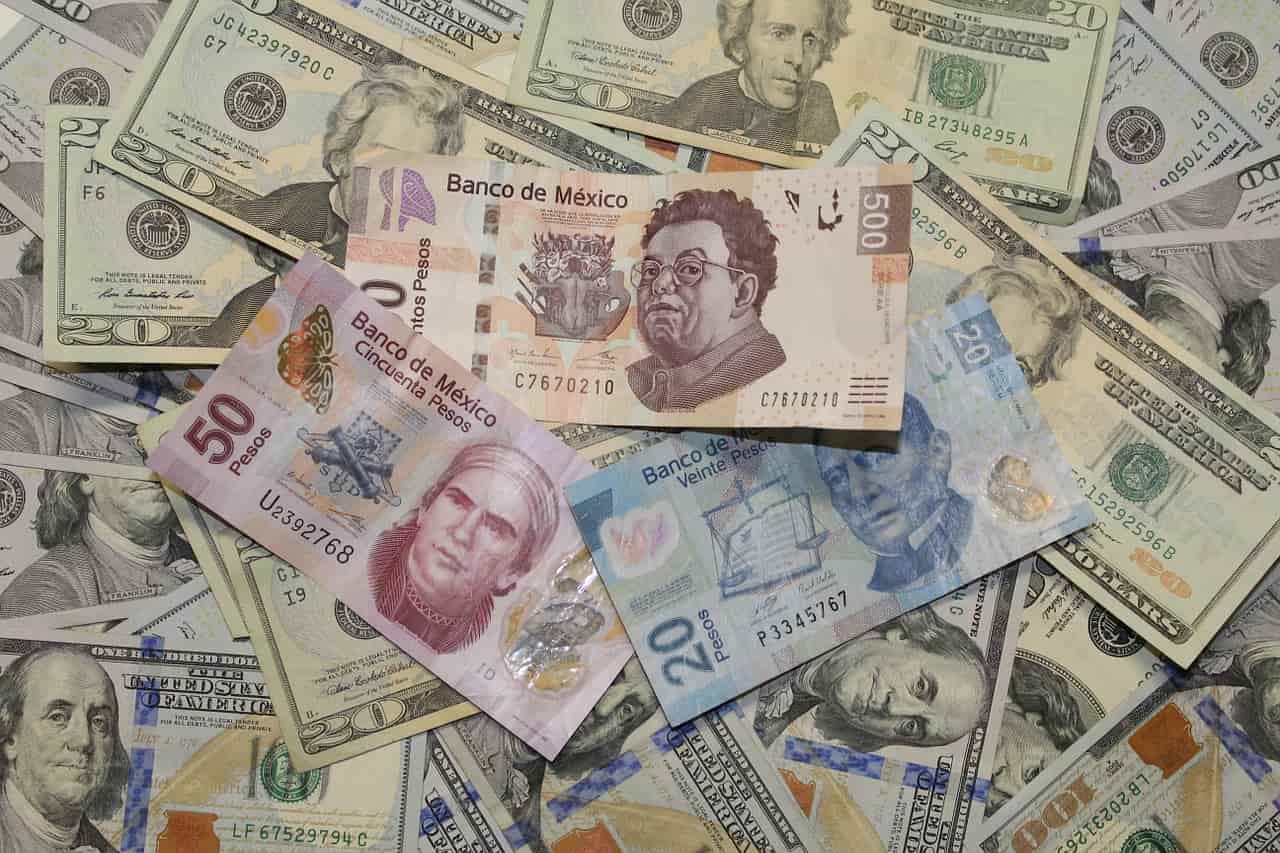The history of the Mexican peso: money acquires nuances depending on the historical context
The presence of the Mexican peso is as old as the colonial period when the viceroy Antonio de Mendoza arrived with the royal commission to create the first Casa de Moneda. The novo-Hispanic peso had a history as a monetary unit until the end of the 19th century.

The history of the Mexican peso dates back to the colonial period when Viceroy Antonio de Mendoza arrived in New Spain with the royal mandate to establish the first mint. In 1535 the mint of Mexico was founded (official establishment where coins were minted with the stamp that identified the right of its legal tender), where silver coins called "Real de a 8" or "peso duro" were manufactured, which was already used in Spain and traveled the world, even circulating in China, considered Antonio Ibarra Romero, academic of the Graduate Program of the School of Economics.
Strictly speaking, money was born as a kind of "cement" in interpersonal relations. It is a useful means of exchange to obtain goods and services and acquires its nuances according to the historical context. In Independent Mexico, copper coins and paper money issues, such as Iturbide's, made their appearance; later, banks arrived and with them, banknotes, whose acceptance was voluntary. In the second decade of the 20th century, the Banco de México was created and the official issuance of banknotes and currency began.
The Mexican peso began to circulate in 1785, its value was determined by the grams of silver with which it was made and was homologated to the account value of the currency that existed in Castile. Transactions began to take place. The notion of money acquired its metallic force from the weight of the metals with which it was made until a precise relation between silver and gold was established, and it became a common currency with the characteristics of a common one; that is to say, a means of exchange, circulation and a reserve of value, whose materiality guaranteed that it would not be deteriorated or destroyed.
This was important because, after the founding of the Mint in 1532, the first coin manufacturing company emerged in New Spain. The Novo-Hispanic peso was one of the most important in the history of the world because it would open its circulation in Asia, for example, and this peso, which began in the 16th century, had a long period as a monetary unit until the end of the 19th century. Its history was early and ended when the silver peso was depreciated against gold and then replaced by fiat money.
"Throughout all this history there is a succession of dies, the printing on the coin is important because there are several signs that identify it, of course, the engraving that the monarchy printed on the coin: Fernando VI and by the grace of God king of Spain and America, with the lions and castles, which is the meeting of the kingdoms that crowned Castile as an empire, and two letters M, which refer to the Mint of Mexico," he explained.
This was a sort of guarantee of the metallic quality and homogeneous weight of the coins, in addition to a small mark that refers to the identity of the assayer who was responsible for ensuring that they had the same amount of metal and the same weight, as well as the quality of the metal in each one, which shows from the beginning that the Novo-Hispanic, later Mexican, coins were characterized precisely by their intrinsic value.
Money during Independence
The War of Independence affected the economy of New Spain and produced a shortage of currency, so the Insurgents were forced to mint their own to raise funds and sustain their armed struggle. Among the most important were those ordered by the Supreme Board and by General José María Morelos y Pavón, the most common of this period, mostly made of copper. In this regard, Ricardo Fernández Castillo, a postdoctoral fellow at the School of Economics, commented that with the War of Independence, what historians call the monopoly of the Mexican Mint, the only one that could mint coins and which existed during the colonial period, was broken.
This historical episode broke its exclusivity and other provincial mints emerged in Guanajuato, Zacatecas, Guadalajara, Chihuahua, and Durango, "as if that were not enough, the insurgent armies under the command of Miguel Hidalgo -later his successor, José María Morelos y Pavón- also began to mint them, breaking the royal tendencies that the Spanish crown had had for the minting of coins in New Spain".
The copper coins ordered by Morelos were equivalent to promises to pay, that is, they were exchanged for their engraved value in silver or gold once the revolution triumphed, which represented the introduction of a fiduciary coin. The obverse presented the monogram of Morelos accompanied by the denomination and year of minting, while the reverse showed a bow with an arrow; pieces of eight, two, one, and half-real were produced. They were withdrawn from circulation in February 1917, when the new Political Constitution of the United Mexican States determined that the issuance of paper money would be the exclusive task of a single bank that would be under absolute government control.
In 1821, after the consummation of Independence and with Agustín de Iturbide as Mexico's monarch, given the country's complex economic situation, the first official banknotes were issued, which were printed on a piece of white paper. Paper money was the object of love and hate, there was resistance to accept its use because a piece of paper was worthless compared to the silver with which some coins were made.
Revolution and currency
Economist Antonio Ibarra pointed out that the Porfiriato projects to keep the nation on the road to progress through laws, programs, and projects ended suddenly with the beginning of the Mexican Revolution, and each faction began to issue its banknotes, to back new public debt, which created momentary heterogeneity that began to be reordered in the post-revolution with the projects of the Banco de México.
In this historical period, the existence of diverse revolutionary forces was shown in several spheres, particularly in the issuance of paper money. The scarcity of cash marked the urgency to produce their own money as "necessity pieces" whose result was a variety in color, design, and style that the Mexican people called bilimbiques. The constitutionalist forces tried to stop their issuance; due to their varied nature, they were easy to counterfeit.
Venustiano Carranza decided to confiscate the private banks and issue government currency, which was without resources; "in reality what happened was an abrupt devaluation with the same use of paper", said the university expert.
To complement his monetary policy, the first head of the Constitutionalist Army, Venustiano Carranza, decreed the abrogation of the concessions to the banks to issue banknotes as they had functioned until then. The new regulation established that the issuing banks could not print more banknotes than those backed by their metallic reserves, so they had to guarantee them in national gold. With this measure, Carranza strengthened the government's regulatory power and guaranteed the functioning of the national monetary system.
Francisco Villa was directly or indirectly responsible for a large part of the coins and banknotes of the Mexican Revolution; the former attracted the interest of collectors due to the amount of metal they were made with.
Viceroyalty and contemporary Mexico
Ibarra Romero pointed out that the existence of money substitutes such as tlacos (whose nominal value was a quarter of a real) and pilones is emblematic. They were made of fractional currency that was not produced in sufficient quantity (two reales, four reales, one real, and quarters). Due to the amount of silver they contained, merchants hoarded, melted, and exported them, in such a way that they were worth more for their intrinsic price than for their nominal cost, "this generated a sort of lack of circulating currency".
The generalization of the tlacos took place, issues made by the pulperías, stores, or haciendas, where a nominal value was engraved on leather, copper, even soap, in exchange for merchandise. Wages were paid with them, "which also meant a kind of extortion on consumers -the workers-, because the prices were fixed based on merchandise and the circulation on a minimum value of the object of exchange", he explained.
Meanwhile, the pylons were used when there was not enough change, for example, they were a real means that had to be returned, for that reason they delivered merchandise in exchange. When Mexico experienced the monetary crisis of peso indexation, stores returned candy or chewing gum. Currency has historically coexisted with pseudo-monetary forms. They have the quality of being a means of exchange and even a means of circulation, but they are not a means to hoard, save or conserve.
It should be noted that according to information from Banco de México, this institution was created in 1925 by decree as a corporation under the government of Plutarco Elías Calles. However, the banknotes it put into circulation at that time were printed by the American Bank Note Company of New York. As of 1969, they began to be printed in the country, by the Banknote Factory of Banco de México, which produces around one thousand 250 million pieces per year. The quantity of each denomination is planned according to public demand, the need to replace deteriorated pieces, and the level of inventory required.
Currently, eight countries use the denomination "peso" for their currency: Mexico, Argentina, Chile, Colombia, Cuba, the Philippines, the Dominican Republic, and Uruguay.
Source: UNAM




